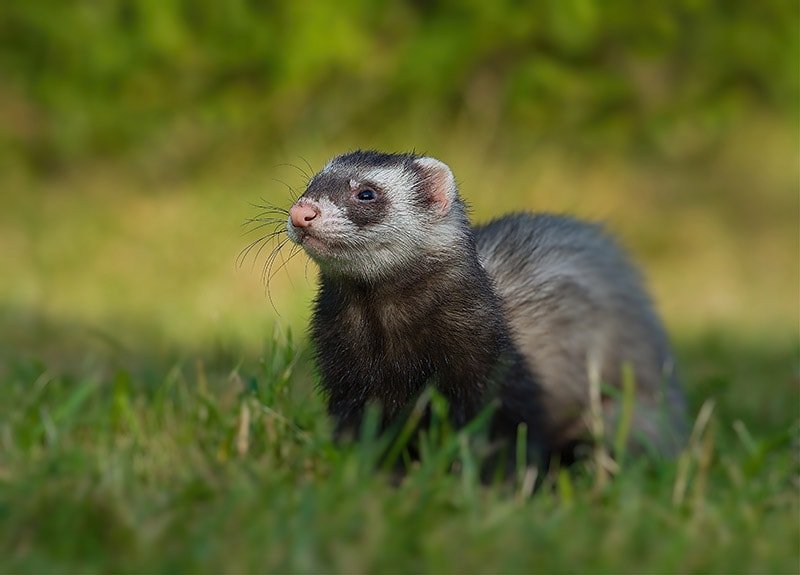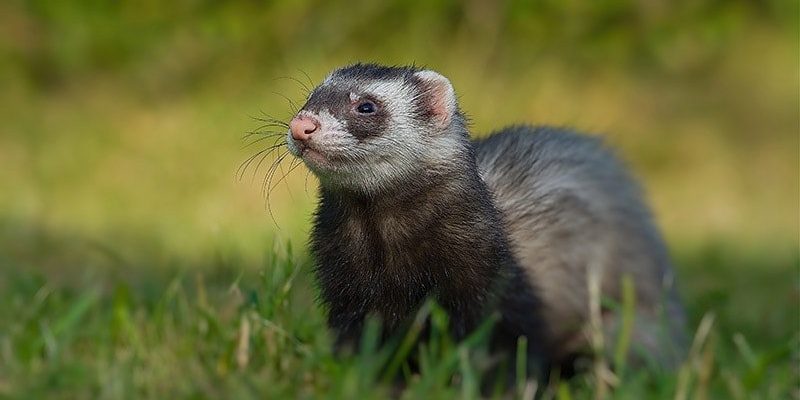
These little guys aren’t just cute faces; they come with unique traits and temperaments that every potential owner should know. If you’re considering welcoming one into your home, let’s dive into what makes sable ferrets special, from their dazzling fur colors to their lovable quirks.
What is a Sable Ferret?
A sable ferret is a domesticated version of the European polecat, with a unique coat color that makes it stand out. These ferrets typically have a dark brown, almost chocolate-like hue with cream or white markings along their bellies and faces. This distinct coloration isn’t just pretty; it’s a reflection of how their genetics work. The sable color results from a specific combination of genes, producing a warm, rich fur that many people find irresistible.
You might be wondering, “Are all ferrets sable?” Nope! Ferrets come in a variety of colors, including albino, black, and silver. But if you have a soft spot for that warm, cozy look of a sable, you’re definitely not alone. Their appearance often attracts those looking for a snuggly companion. Plus, their playful nature makes them a joy to have around!
Physical Traits of Sable Ferrets
When it comes to physical traits, sable ferrets are known for more than just their stunning fur. On average, they weigh between 1-3 pounds and measure about 18-24 inches from nose to tail. Their long, slender bodies are designed for agility, allowing them to dart around your living space effortlessly.
Aside from their fluffy coats, sable ferrets have adorable little faces with bright, curious eyes. Their ears are small and rounded, and their whiskers are quite prominent, giving them a keen sense of smell. This is important because ferrets are naturals at exploring their surroundings, so those little sensory tools help them navigate the world. If you ever catch a sable ferret peeking out from behind a couch, you’ll understand just how cute they can be!
Temperament and Behavior
Let’s be honest: ferrets are quirks wrapped in fur! Sable ferrets, in particular, are known for their playful and friendly temperament. They thrive on interaction and love to play games—think “hide and seek,” but with a furry twist. You might find your sable ferret hopping around your living room, stealing socks, or chasing after a toy mouse.
They’re also social creatures, often getting along well with other ferrets and pets, provided they’re introduced properly. However, like any pet, they have their moods. Sometimes they might be more cuddly, seeking out affection and warmth, while at other times, they might prefer to explore. This variability is part of their charm! Because they’re so curious, you need to provide them with plenty of enrichment activities to keep them entertained.
Care Requirements for Sable Ferrets
Now that you’ve fallen for their adorable looks and fun personality, let’s chat about care. Sable ferrets require a balanced diet, often consisting of high-quality ferret food and occasional treats like small pieces of meat. Remember, their digestive systems are different from ours, so choosing the right food is crucial for their health.
They also need access to fresh water at all times. In addition to their dietary needs, sable ferrets benefit from regular exercise. A spacious play area, complete with tunnels and toys, is essential for keeping them fit and happy. Lastly, don’t forget about regular vet check-ups to monitor their health and well-being.
Living Environment for Sable Ferrets
Creating a safe and engaging living environment is vital for your sable ferret’s happiness. Ideally, they should have a spacious cage that allows them to move around freely. Look for an enclosure with multiple levels, ramps, and cozy hiding spots—ferrets love to burrow!
However, it’s essential to allow them out of their cage for supervised playtime. You can ferret-proof your home by removing any hazardous items, covering cords, and blocking off small openings where they could get stuck. This is especially important since sable ferrets are notorious for getting into everything!
Health Considerations for Sable Ferrets
While sable ferrets are generally healthy pets, they can be prone to certain health issues. Some common concerns include adrenal disease, insulinoma, and dental problems. Regular vet check-ups can help catch any issues early, keeping your furry friend in tip-top shape.
You might also want to ensure they’re properly vaccinated against common ferret diseases. Remember, a healthy ferret is a happy ferret! Keeping an eye on their weight and behavior can help you identify problems before they escalate.
Sable ferrets are delightful companions that bring joy, laughter, and a sprinkle of mischief to your life. With their charming personalities and striking appearance, it’s not hard to see why they’re popular among pet lovers. By understanding their unique traits, care needs, and temperament, you can provide a happy and fulfilling life for your sable ferret.
Whether you’re an experienced pet owner or a first-timer, sable ferrets can make wonderful additions to your family. So, if you think you’re ready to welcome one of these furry little bundles into your home, prepare for a playful adventure!

